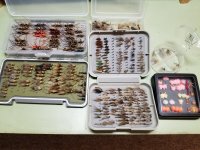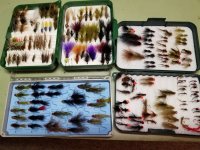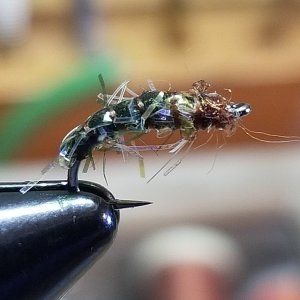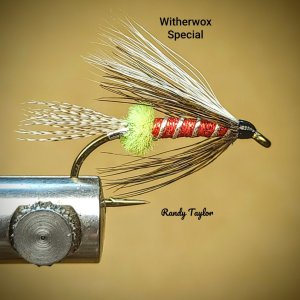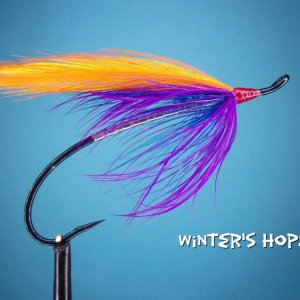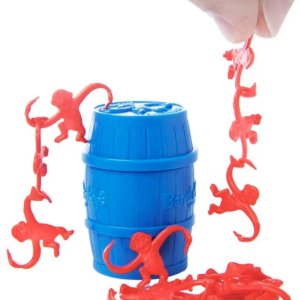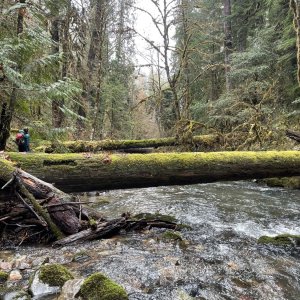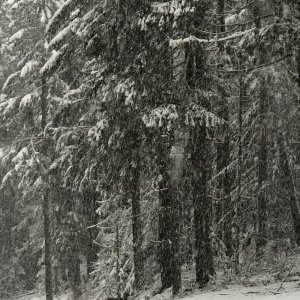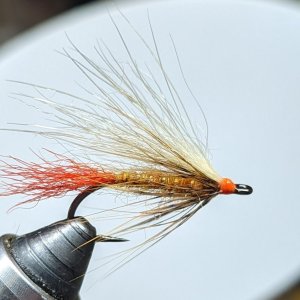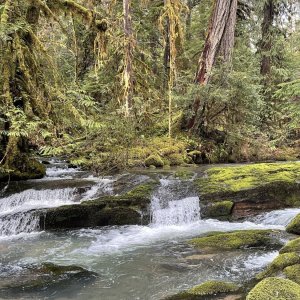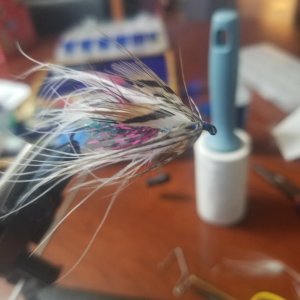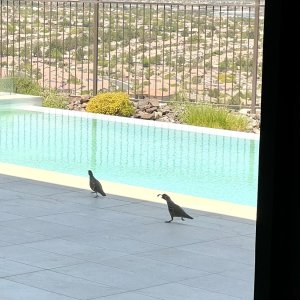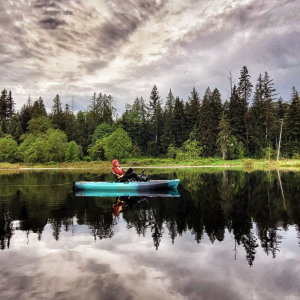My biggest weakness when it comes to fly fishing is definitely fly selection. I like saltwater because it’s kinda easy: Look at the water around you, pick some baitfish looking patterns, try some top water stuff, doesn’t seem hard to mess up. Freshwater is a little daunting though. There are just so many options when you walk into a shop. When you ask for fly suggestions, you get a different suggestion depending on who you ask. What can I do to start cracking the code, so that before I head out on a trip I can pack flies that I feel confident with?
You are using an out of date browser. It may not display this or other websites correctly.
You should upgrade or use an alternative browser.
You should upgrade or use an alternative browser.
Learning fly selection
- Thread starter speedbird
- Start date
I think a lot will depend on what you plan to target. That will help narrow down your choices. Also what time of the year will also help narrow down fly choices.
Say you intend to target trout. There are hatch charts for most rivers with good trout populations based on the time of year and what bugs you are likely to encounter, which will lead you to what dries, emergers, nymphs will likely work. Those charts will also help you select the correct fly sizes,
SF
Say you intend to target trout. There are hatch charts for most rivers with good trout populations based on the time of year and what bugs you are likely to encounter, which will lead you to what dries, emergers, nymphs will likely work. Those charts will also help you select the correct fly sizes,
SF
Last edited:
In my experience rivers aren’t that tricky.
Dry: Elk hair caddis, X Caddis, and a yellow sally are about all you need. Start there and vary when you get a handle on them.
Nymphs: 14 Hare's Ear with an 18 Pheasant Tail dropper, and get ready to catch. Vary if you want, but not usually necessary on most western freestones.
Dry: Elk hair caddis, X Caddis, and a yellow sally are about all you need. Start there and vary when you get a handle on them.
Nymphs: 14 Hare's Ear with an 18 Pheasant Tail dropper, and get ready to catch. Vary if you want, but not usually necessary on most western freestones.
I think its important to think less about what the fish sees and more about the functional qualities of a fly. The goal when putting together a fly box for a trip is to have the bases covered, and I think it helps to look at flies in that context. I would agree with Jake than in most rivers it doesn't matter, but when it does matter it can matter a lot. If you're headed to somewhere famous putting some though into your fly box will serve you well.
In my head I categorize dry flies based off where they float. A high floating pattern like the elk hair caddis is great for prospecting and is very visible, but not as effective for hyper-selective trout. A low floating pattern like the iris caddis is tough to see and harder to float, but better for selective trout. So I look at what bugs will be present, and then make sure I have both high and low floating patterns in a range of sizes, for each bug. I don't think color is that important but having light and dark versions of patterns has made a difference for me in the past. Each hatch has some nuances to it, for example, I find trout key in on low floating green drake emergers and cripples over adults to an extreme degree. I have had little success on high floating drakes while naturals were present. Sometimes they'll key in on "drowned" naturals during stonefly hatches too and not touch anything floating on top.
For nymphs I use the same dozen confidence patterns across the board. Sometimes flashy helps, sometimes they wont touch it, so I bring both.
In my head I categorize dry flies based off where they float. A high floating pattern like the elk hair caddis is great for prospecting and is very visible, but not as effective for hyper-selective trout. A low floating pattern like the iris caddis is tough to see and harder to float, but better for selective trout. So I look at what bugs will be present, and then make sure I have both high and low floating patterns in a range of sizes, for each bug. I don't think color is that important but having light and dark versions of patterns has made a difference for me in the past. Each hatch has some nuances to it, for example, I find trout key in on low floating green drake emergers and cripples over adults to an extreme degree. I have had little success on high floating drakes while naturals were present. Sometimes they'll key in on "drowned" naturals during stonefly hatches too and not touch anything floating on top.
For nymphs I use the same dozen confidence patterns across the board. Sometimes flashy helps, sometimes they wont touch it, so I bring both.
If you're trout fishing rivers/streams I would always bring some small general soft hackles, partridge/peacock etc that can imitate various caddis, mayflies etc. They can save your outing sometimes and/or be lights out. A few small streamers are always good as well, bugger, thin mint, halebop, sculpzilla. Always have a couple chubbys for dry dropper just for fun, my 2 cents.
RCF
Life of the Party
If you are fishing lakes dragonfly nymphs imitations are great --> medium or dark olive. Pattern? Carey Special is a tried and true favorite. Wolly Buggers are wonderful too.
@Jake Watrous suggestions above are great for moving water.
Just remember - 90% of what a fish eats is sub-surface. But watching a dry fly get taken can be the epitome of enjoyment.
@Jake Watrous suggestions above are great for moving water.
Just remember - 90% of what a fish eats is sub-surface. But watching a dry fly get taken can be the epitome of enjoyment.
Divad
Whitefish
Or a tight line grab on a swung or stripped fly (my personal favorite dopamine fix).If you are fishing lakes dragonfly imitations are great --> medium or dark olive. Pattern? Carey Special is a tried and true favorite. Wolly Buggers are wonderful too.
@Jake Watrous suggestions above are great for moving water.
Just remember - 90% of what a fish eats is sub-surface. But watching a dry fly get taken can be the epitome of enjoyment.
The flys Jake mentioned are good gotos for rivers/creeks and lakes and the Carey Special mentioned by RCF is very versatile. Add a couple midge nymphs (for lakes), a stonefly nymph, wooly buggers and a leech that imitates an erpobdella leech, they’re everywhere in western wa lakes.
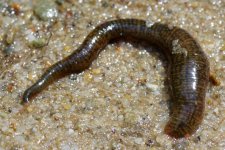
I fish a pattern that imitates those 60% of the time on lakes.
I go through phases, and I have had at least some success with just about everything I've gotten serious about trying. Find a few patterns that cover a lot of imitations and learn how to present them (the fish will tell you when you get it right).
For cutts on the wet side, I generally like large attractors (stimulators, Madam X, etc. in size 8 or 6) on top, and the fish almost never eat them on a dead drift; almost always while skating on the surface. For a dropper, a soft hackle, pheasant tail, or the like will pick up fish, again almost always on the swing after the dry comes under tension. These cutts are strange. They like flies moving!
And oh, yeah... streamers are my bread and butter for the local cutts! Bugger and sculpin patterns are my favorites, and I often fish a small Gartside soft hackle streamer behind them. It's amazing how many fish jump on that little thing after ignoring the bigger bite...
Rainbows, brookies, and browns will eat the same stuff in the fabled waters to our east (maybe go a couple sizes smaller on the dries), but they tend to like a dead drift on top (though a soft hackle dropper often gets nailed when the fly comes under tension at the end of your drift!). Better ask someone else how to get those Rocky Mountain fish on streamers; I pretty much suck at that, for whatever reason.
For cutts on the wet side, I generally like large attractors (stimulators, Madam X, etc. in size 8 or 6) on top, and the fish almost never eat them on a dead drift; almost always while skating on the surface. For a dropper, a soft hackle, pheasant tail, or the like will pick up fish, again almost always on the swing after the dry comes under tension. These cutts are strange. They like flies moving!
And oh, yeah... streamers are my bread and butter for the local cutts! Bugger and sculpin patterns are my favorites, and I often fish a small Gartside soft hackle streamer behind them. It's amazing how many fish jump on that little thing after ignoring the bigger bite...
Rainbows, brookies, and browns will eat the same stuff in the fabled waters to our east (maybe go a couple sizes smaller on the dries), but they tend to like a dead drift on top (though a soft hackle dropper often gets nailed when the fly comes under tension at the end of your drift!). Better ask someone else how to get those Rocky Mountain fish on streamers; I pretty much suck at that, for whatever reason.
Start with tried and proven patterns, then as you observe the streams you fish try different patters to imitate what you see. Spend time looking at what's on and in the water, and what's under the rocks.
Jake and Zak seem to have similar recommendations as I would make. I don't carry elk hair caddis all the time, and I should bring the muddler box more often. Here's my always take: somethings gonna work.
Pat's rubber legs, bead head hare's ears and knuckle dragging stones, Partridge and orange with march browns and unweighted hares ears, eggs, diving caddis, stimulators.
For lakes I like simi-seal leeches, olive willies, carey specials and wolly buggers.
Jake and Zak seem to have similar recommendations as I would make. I don't carry elk hair caddis all the time, and I should bring the muddler box more often. Here's my always take: somethings gonna work.
Pat's rubber legs, bead head hare's ears and knuckle dragging stones, Partridge and orange with march browns and unweighted hares ears, eggs, diving caddis, stimulators.
For lakes I like simi-seal leeches, olive willies, carey specials and wolly buggers.
Attachments
Last edited:
More than half the fun of flyfishing for me is solving the puzzle. When I started I joined d a club and found a mentor (actually several). Many recommended entomology books, classes, fly tying classes with folks who will talk about the bugs as they show you how to imitate them. I read Selective Trout by Doug Swisher and Carl Richards, Mayflies, the Angler, and the Trout, by Fred Arbona Jr., and all of Randall Kaufmann's books. These all helped a lot to inform my puzzle solving.
a Chubby suspending midge nymphs in shallower water is my go to on several lakes...always fun when a bruiser decides to munch the floatera couple chubbys for dry dropper just for fun, my 2 cents.
Trout are far less selective than many experts would have you believe. The problem is that many people don’t meet the trout on the trout’s terms; they often fish they way they want and expect the trout to play along. If that is how you approach fishing, you’re going to need the perfect fly or the fish won’t budge.
If you meet the fish on their terms, fly selection doesn’t need to be any more complicated than a few common nymphs, dries, streamers and mop flies. Mostly mop flies.
If you meet the fish on their terms, fly selection doesn’t need to be any more complicated than a few common nymphs, dries, streamers and mop flies. Mostly mop flies.
Last edited:
I struggle with fly selection and confidence in casting what I tie on. Mostly a gear guy but trying to get more serious about catching fish on flies.
Recently at my local lake there have been several of these adult bugs flying about. When trout have been rising I have casted a few different things at them including the two in the picture. The chironomid below an indicator. From the boat I also casted and stripped a small muddler. I ended up actually catching fish casting spoons instead.
What would you suggest instead to present them given the hatch? Are my flies simply too large?
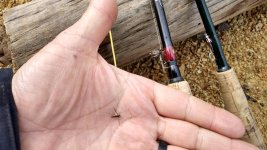
Recently at my local lake there have been several of these adult bugs flying about. When trout have been rising I have casted a few different things at them including the two in the picture. The chironomid below an indicator. From the boat I also casted and stripped a small muddler. I ended up actually catching fish casting spoons instead.
What would you suggest instead to present them given the hatch? Are my flies simply too large?

RCF
Life of the Party
@Tuna Ball - matching the hatch is not always the easiest thing to do and, many times, the hatches are short in duration. By the time you figure out the right fly, the right depth, etc. the hatch can be over. Chironomid fishing can be very productive and I will let the experts chime in on those.
You might also consider fishing a damsel or dragon fly nymph. They are available year round and fish eat them all the time. There are a number of examples in posts above.
You might also consider fishing a damsel or dragon fly nymph. They are available year round and fish eat them all the time. There are a number of examples in posts above.
I am absolutely nothing close to a chironomid expert, but I continue to productively expand my lake fishing interests in that direction.I struggle with fly selection and confidence in casting what I tie on. Mostly a gear guy but trying to get more serious about catching fish on flies.
Recently at my local lake there have been several of these adult bugs flying about. When trout have been rising I have casted a few different things at them including the two in the picture. The chironomid below an indicator. From the boat I also casted and stripped a small muddler. I ended up actually catching fish casting spoons instead.
What would you suggest instead to present them given the hatch? Are my flies simply too large?
View attachment 105068
Matching the hatch is (IMHO) a vastly overrated part of lake flyfishing (compared to presentation; depth, placement, retrieve). Even when a hatch is occurring you're likely to catch more (and larger) fish with nymphs and all sorts of subsurface flies. I think the big boys achieve their size by feeding at depth and in cover instead of exposing themselves to aerial predators. More calories and greater safety for such opportunists.
Yes, there are few things as much fun as hooking trout on a dryfly during a lake hatch, but in my experience those opportunities are rather limited compared to presenting flies to trout where they spend the bulk of their time feeding below. Those fish you caught on spoons could probably be caught on all sorts of wet flies, nymphs or streamers.....those spoons were being fished in that same subsurface environment.
Final suggestion....fish those shitty casts as much as the perfect ones....especially when flyfishing subsurface. Once that fly is being fishing down in the water column there's a good chance of hooking up with fish on the retrieve...unless you're flailing around roiling the water trying to achieve a perfect cast.
Last edited:
This hatch seems to go on for hours with dozens at a time in view. I tried for a short time today. There were fish within casting range and I tried a couple different chironomids one under a slip bobber on spinning rod and the other fly gear. I tried a less buggy pattern stripped, no luck. I tried the bottom fly here with the pink bead.@Tuna Ball - matching the hatch is not always the easiest thing to do and, many times, the hatches are short in duration. By the time you figure out the right fly, the right depth, etc. the hatch can be over. Chironomid fishing can be very productive and I will let the experts chime in on those.
You might also consider fishing a damsel or dragon fly nymph. They are available year round and fish eat them all the time. There are a number of examples in posts above.
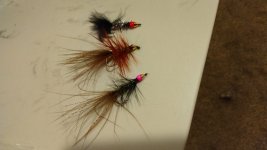
That looks like some kind of crane fly to me. I would say you would want much sparser flies to imitate it. However like @krusty said, just because the hatch is happening doesn't mean the trout are feasting on itThis hatch seems to go on for hours with dozens at a time in view. I tried for a short time today. There were fish within casting range and I tried a couple different chironomids one under a slip bobber on spinning rod and the other fly gear. I tried a less buggy pattern stripped, no luck. I tried the bottom fly here with the pink bead.
View attachment 105124
RCF
Life of the Party
That looks like some kind of crane fly to me. I would say you would want much sparser flies to imitate it. However like @krusty said, just because the hatch is happening doesn't mean the trout are feasting on it
Maybe an emerger or wet fly would be advantageous. Smaller and sparse too...

